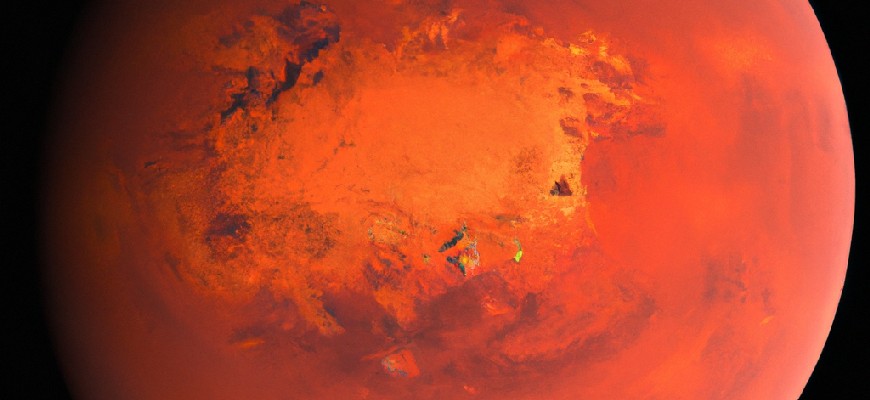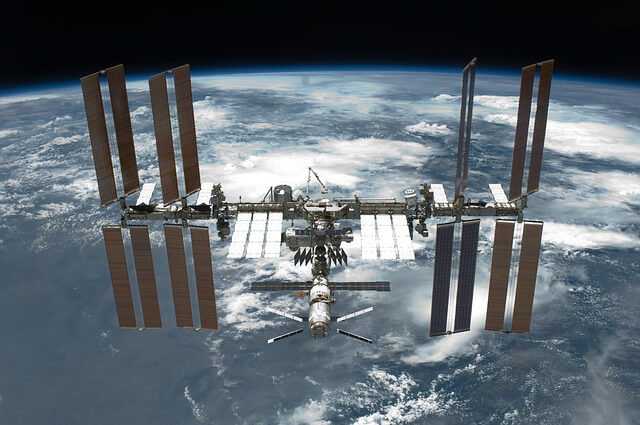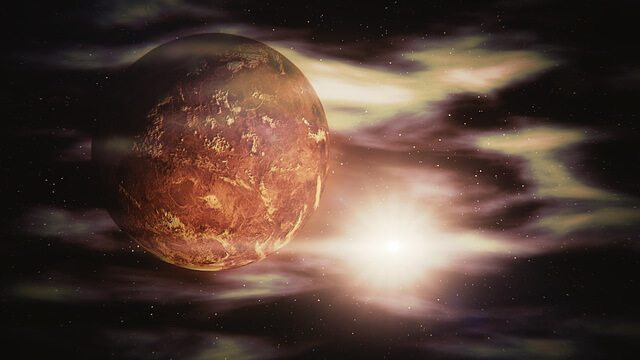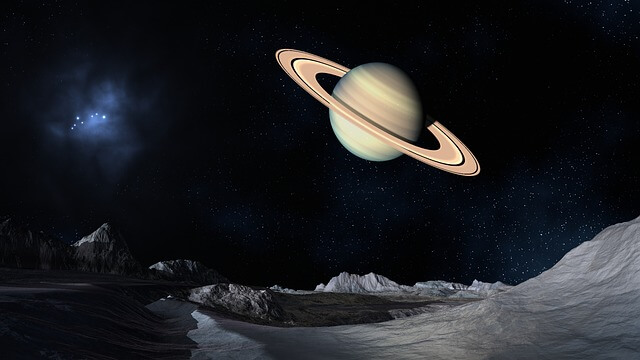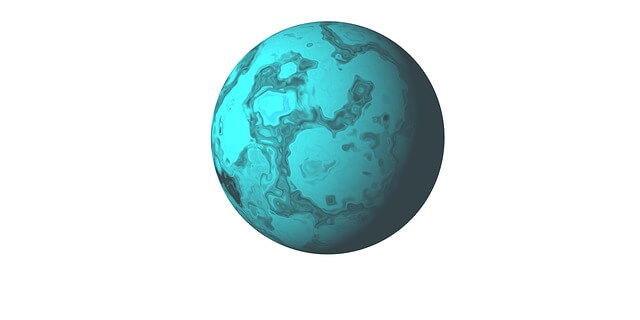Mars is a fascinating planet that has captured our imagination for centuries. Here are 20 interesting facts about Mars that you might find intriguing:
1. How long does the journey take?
According to NASA, the journey to Mars takes about 7 months and 300 million miles or 480 million kilometers. This depends on how close Earth and Mars are to each other. The best time to go to – when the planets are in opposition – is every 26 months.
2. How long is a day?
On Mars, a sidereal day lasts 24 hours 37 minutes and 22 seconds. This is slightly longer than an Earth day, which lasts 23 hours 56 minutes and 4 seconds.
3. Why is Mars called the Red Planet?
Mars is called the Red Planet because of its reddish surface hue. This color is given to it by maghemite iron oxide mineral.
4. What is the temperature on Mars?
The average temperature on Mars is significantly lower than on Earth, about -40°C. The maximum air temperature recorded by the Spirit rover was +35 °C. Winter nights can reach as low as -80 °C to -125 °C even at the equator, and nighttime temperatures at the poles can drop to about -153 °C.
5. What does the surface look like?
The surface of Mars consists of sand, rocks and mountainous terrain. There are many craters from meteorites, hills and valleys on the surface. Recently, NASA’s Perseverance rover sent stunning images of Red Planet that allow us to see high-quality surface of Mars.

6. Who is Mars named after?
Mars is named after the Roman god of war, Mars. Many believe that ancient peoples associated Red Planet with bloodshed and war because of its reddish color.
7. How long does it take a rocket to fly to Red Planet?
The travel time to Mars depends on the distance between Earth and Mars, as well as the speed of the spacecraft. The planet is located at a distance of 55 to 400 million kilometers from Earth. If you fly at a speed of 900 km/h, you can reach it in 6-7 years. But in practice, travel time can be longer.
8. Size Mars
Has a diameter of 6,779 km, which is 53% smaller than Earth’s diameter. The mass of Mars is 6.418 × 10^23 kg, which is ten times less than the mass of Earth. This means that objects on Mars weigh only a third of their earthly weight.
9. Volcanoes
Mars has the largest volcano in the solar system, Olympus Mons, which is about three times the height of Mount Everest. Yes, it’s true. Mount Olympus is the largest mountain in the Solar System. It is the highest volcano in the Solar System and has a height of 21,900 meters. Mount Ascrea is also a volcano on Mars but not the largest mountain in the Solar System.
10. Canyons
There are several canyons on Mars. One of the largest canyons is the North Canyon (Chasma Boreale), located in the north of the planet. This canyon is about 560 km long.
Also on this planet is a giant canyon system called Mariner Valley. It stretches for 3000 km in length, hundreds of kilometers in width and goes up to 8 km in depth.
11. Craters
A crater on Mars is a large depression on the surface of the planet, formed as a result of the fall of a meteorite or other celestial body. The largest crater is the Bakken crater, which is about 480 km in diameter. In addition, there are many other craters on this planet of various sizes and shapes.
12. Is there water on Mars?
Yes, there is water on Mars, but it’s usually in the form of ice or steam. There are also lakes and rivers on the surface, but they are composed of a liquid containing salts and having a very low freezing point.
13. How did water form on Mars?
There are several hypotheses about how water formed on Mars. One of them is that water could have appeared even before life existed on Earth.
Feeling especially bold and ambitious? That could be because #AriesSeason is in full swing! Aries is ruled by the second-smallest planet in our solar system, Mars. 1/2 pic.twitter.com/mKZzff0Ad6
— National Geographic TV (@NatGeoTV) March 21, 2023
Another hypothesis is that water on Mars could have appeared later, when the planet had the conditions for its formation. For example, some researchers believe that water could be formed due to the decay of methane. Other researchers believe that water could have come from comets or asteroids.
14. How long will people live on Mars?
There is no definitive answer to this question yet. However, according to Elon Musk, a million people could live on Mars by the 2060s1. NASA’s path for human exploration of Mars begins in low-Earth orbit aboard the International Space Station. Astronauts on the orbiting laboratory are helping us prove many of the technologies and communications systems needed for human missions to deep space, including Mars.
NASA has also been studying Mars for more than 40 years with robotic explorers. Currently, Mars is wobbling back and forth between 15 and 35 degrees’ obliquity, on a timescale of about 100,000 years. But every million years or so, it leans over as much as 60 degrees. Along with these changes in obliquity come changes in climate and atmosphere.
15. How many reconnaissance missions have been sent to Mars?
According to a source, out of the 56 missions that were planned, only 26 were successful. NASA has sent many missions to Mars, including orbiters and rovers. The Mars Reconnaissance Orbiter (MRO) is one of NASA’s most successful missions to Mars. It has been studying Mars in detail and has returned over 400 terabits of data (more than all other Mars missions combined).
After quite a bit of driving lately, I’m at a new spot we call “Berea.” I’ve been scanning this layered rock remotely, and am going to look more deeply into the story it records. Back to #SamplingMars! pic.twitter.com/LVyxzn7Wd1
— NASA’s Perseverance Mars Rover (@NASAPersevere) March 22, 2023
16. Mars in cinema and science fiction
Mars has been a popular topic in movies and science fiction. Some of the most popular movies about Mars include “The Martian” (2015), “Total Recall” (1990), and “Red Planet” (2000). In science fiction, Mars has been featured in many books and stories, including “The War of the Worlds” by H.G. Wells and “The Martian Chronicles” by Ray Bradbury.
17. How does Mars affect Earth?
Mars does not have a significant impact on Earth. However, studying Mars can help us learn more about our own planet and how it has evolved over time. For example, studying Mars’ atmosphere can help us understand how our own atmosphere has changed over time and how we can better protect it.
18. What are some other benefits of studying Mars?
Studying Mars can help us learn more about the history of our solar system and how it has evolved over time. It can also help us understand how planets form and how they change over time. Additionally, studying Mars can help us learn more about the potential for life on other planets and how we might be able to sustain human life in space.
19. Satellite
Mars has two small moons, Phobos and Deimos. They are both irregularly shaped and are thought to be captured asteroids.
20. How high can you jump on Mars?
On Mars, the gravity is less than on Earth, which allows you to jump higher than on Earth. On Mars, you can jump to a height of about 3 meters, while on Earth, the average person can only jump to a height of about 40 cm.

